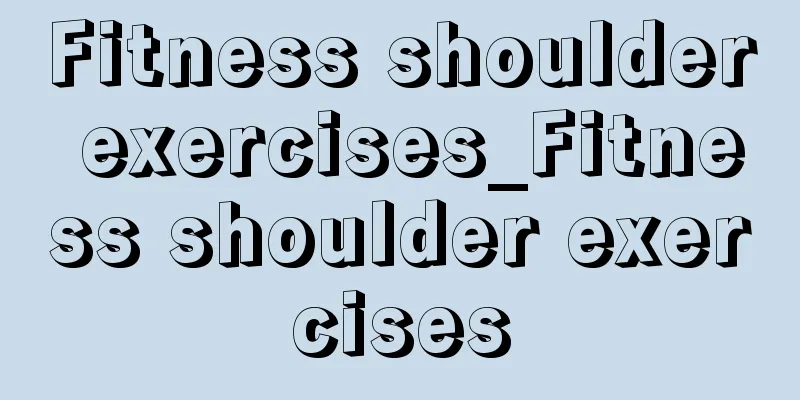Can I practice yoga if I have spondylitis?

|
With the rapid development of the economy, some people suffer from spondylitis due to the special nature of their work. Many people recommend yoga exercise therapy to help recovery and prevention, but some people think that people with spondylitis cannot practice yoga. Many yoga movements and techniques are difficult. If you practice yoga, it will aggravate the condition. So, can people with spondylitis practice yoga? I believe everyone is very curious. Let’s take a detailed look at whether spondylitis can be cured through yoga. Spinal breathing to awaken the spine: Lie on your back or sit up and relax your whole body. You can do abdominal breathing or chest breathing. Inhale, starting from the coccyx and moving up along the spine to the cervical vertebrae. Exhale, from the cervical vertebrae all the way down to the coccyx, as if the air is flowing along the spine. If you cannot breathe effectively along the spine, you can also breathe along the entire back, inhaling from the hips up to the back of the neck, and exhaling from the back of the neck down to the hips. Do it for 3 to 5 minutes. You can also practice it at any time, with no time limit. If you feel a slight warmth in your back, keep warm. After you gain experience in practice, you can add visualization, rising or falling along the spine segment by segment with each inhalation and exhalation. This will make the effect more obvious. Positioning breathing method with reverse abdominal breathing: stand or sit and try to relax your body. Do a few reverse abdominal breathing first: inhale, contract the abdomen, raise the lower edge of the ribs, and expand the chest; exhale, relax the abdomen, and let the chest cavity drop naturally. Because the sacroiliac joints are damaged in the vast majority of ankylosing spondylitis patients, the lumbar spine, thoracic spine, and cervical spine are also common damaged areas. Therefore, when breathing, you can start from the sacroiliac joint and then move to the cervical vertebrae. The method of positioning breathing in conjunction with reverse abdominal breathing: reverse abdominal breathing, inhale, the air seems to enter the sacroiliac joint from the navel, exhale, the air goes from the sacroiliac joint to the navel. Practice for 3 to 5 minutes. Then move on to the lumbar spine, thoracic spine and cervical spine in turn, practicing each part for 3 to 5 minutes. You can also manage your own practice time. Generally speaking, you can start with the most severe area and then practice the next most severe area. Hands on the wall magic chair pose: Stand facing the wall and raise your arms upwards, with your arms parallel and your palms against the wall. Adjust the distance of your toes from the wall depending on the flexibility of your shoulder joints. The distance from the toes to the wall determines the difficulty of the exercise, and can be adjusted according to the specific situation during the exercise. At the beginning, the standard is that the thighs can be parallel to the ground during the squat process. Inhale and stretch your back upward, exhale, keep your palms against the wall, bend your knees, keep your feet still, and slowly squat down until your body does not lose balance, but cannot squat any further. Stay in that position for 3 to 5 breaths as your physical strength allows. Inhale again and stand up, exhale and squat down. Practice this 3 to 5 times, or you can decide the number of times based on your individual situation. After the exercise, rest in corpse pose. Cat stretch [Supine Cat Stretch] When doing the supine cat stretch, since the lower thoracic and lumbar parts of the spine are relatively fixed, the movement is mainly focused on the cervical spine, upper thoracic spine, sacrum and coccyx. When practicing, you need to use the pelvis to tilt forward and backward to drive. Lie on your back with your arms at your sides. Inhale, lift your abdomen, push your pelvis and lumbar spine upward as much as possible, and push the ground downward with your tailbone. Use force on the top of your head to try to arch your chest and abdomen upward. Exhale, tighten your abdomen, slowly lower your lumbar spine to the ground, raise your head to stretch your neck and shoulders, while rolling your tailbone up and letting your thighs naturally lift off the ground. If you have difficulty, just try your best to stretch your neck and shoulders upwards as far as you can. Practice 3 to 5 times, taking a short break between each breath. Finally, rest in supine corpse pose. [Seated Cat Stretch] Sit comfortably. If you cannot sit on the ground, you can also practice it on a chair. Support your knees with your hands and hold them tightly with your palms. Keep your upper body as upright as possible and look straight ahead. Inhale, lift your chest forward, and let your head tilt back naturally; exhale, arch your back, contract your chest and abdomen, stretch your cervical spine, and bring your chin in as close to your sternum as possible. Practice 3 to 5 times. [Kneeling Cat Stretch] Kneeling Cat Stretch is the most commonly used cat stretch in yoga practice. How to do it: Kneel on your knees, hip-width apart. Support your body with your hands on the ground, shoulder-width apart, elbows facing each other, arms and thighs perpendicular to the ground, torso parallel to the ground, and eyes looking down. If the instep cannot be flat on the ground, you can point your heel upward with your toes touching the ground. Inhale, lift your tailbone, head and neck up as far as you can at the same time, let your chest and abdomen sink naturally, and look straight ahead. Exhale, roll your tailbone down close to your navel, tuck your chin in, lower your head, look at your groin, and naturally arch your cervical, thoracic, and lumbar vertebrae upward, pushing the junction of the thoracic and lumbar vertebrae to the highest point possible. Practice 3 to 5 times or more, depending on your personal situation, and finally lie on your back to rest. Can people with spondylitis practice yoga? The above-mentioned yoga movements can effectively help the recovery of spondylitis. Patients must insist on practicing yoga every day. It can not only improve the quality of life, relieve symptoms, but also help quick recovery. After practicing yoga, you must rest in bed in time, maintain adequate sleep, and take timely nutritional supplements to help the recovery of spondylitis. I wish you good health. |
<<: Can I practice yoga if I have synovitis?
>>: Can I practice yoga if I have a bad cervical spine?
Recommend
How to quickly build muscles all over your body
How to grow muscles quickly? Those who want to gr...
Which type of person is most suitable for jogging?
Running is one of the most common sports, but not...
If you have this problem, climbing a mountain is equivalent to throwing your life away!
Mountain climbing is an outdoor sport and also an...
Can running help you sleep?
Modern people pay more and more attention to heal...
Can cycling 8 kilometers a day really help you lose weight?
Among various fitness and weight loss methods, cy...
What are the benefits of jogging for 40 minutes?
In modern life, people increasingly feel the impo...
The stronger the middle-aged man is, the more his wife likes him
When people reach middle age, especially men afte...
What are the yoga detox methods?
I believe everyone is familiar with yoga, because...
Breathing techniques for running
Mastering scientific running breathing techniques...
What is the best way to reduce fat on waist?
Well, in today's society, beauty is very impo...
What kind of shoes should I wear when traveling?
Nowadays, many people like to visit scenic spots ...
Is badminton considered an aerobic exercise?
I believe everyone is familiar with badminton. Th...
What are the symptoms of excessive exercise?
Doing more exercise is very good for us and can h...
What are the causes of muscle soreness after exercise?
Many people always experience muscle soreness aft...
How to train arm muscles
For men, muscles are a symbol of health and sunsh...









